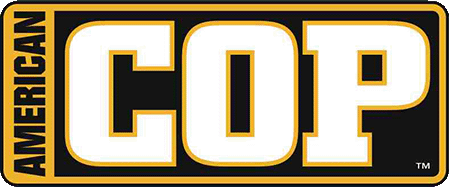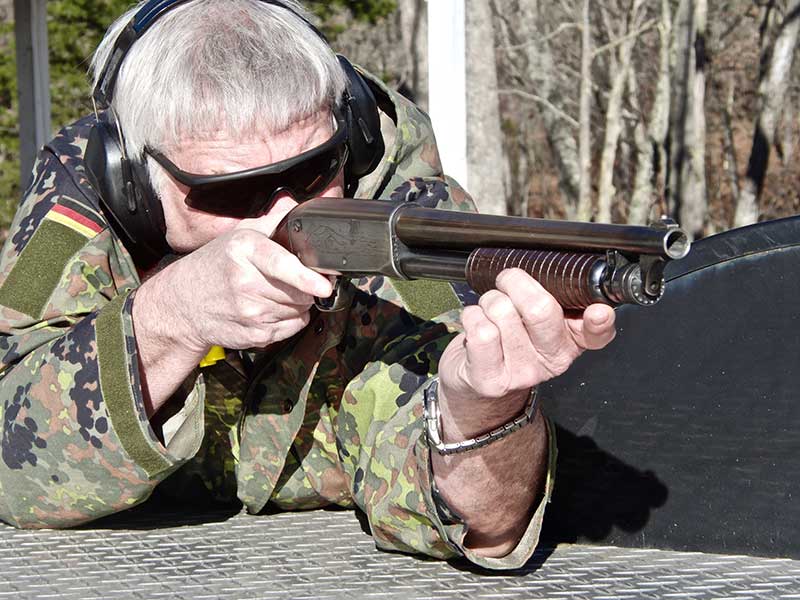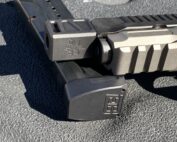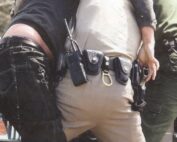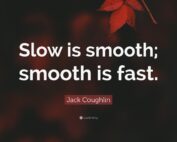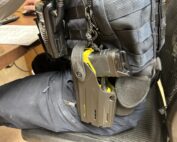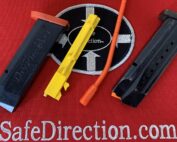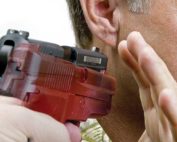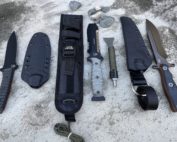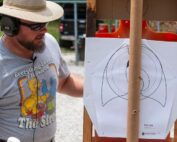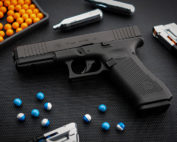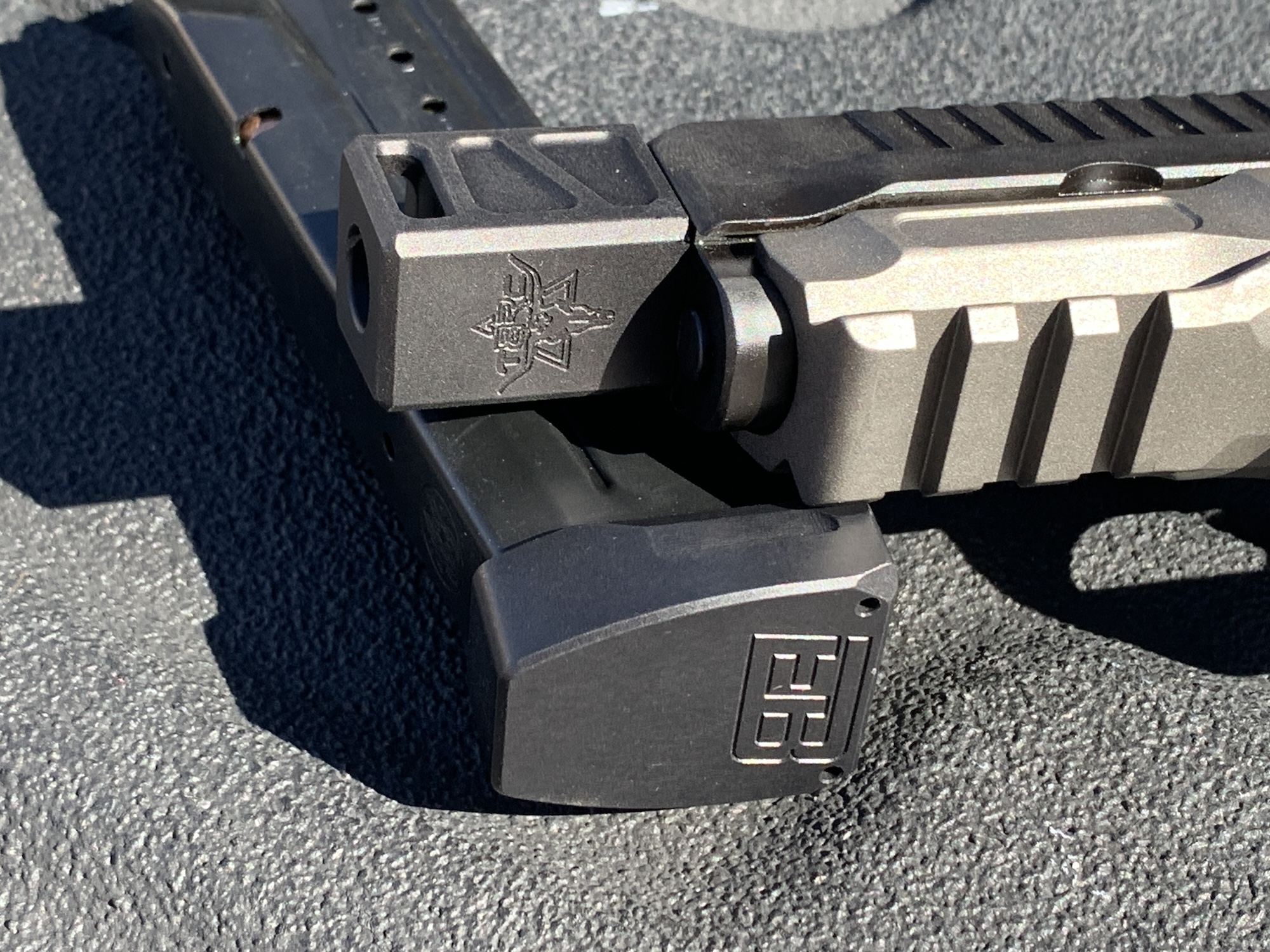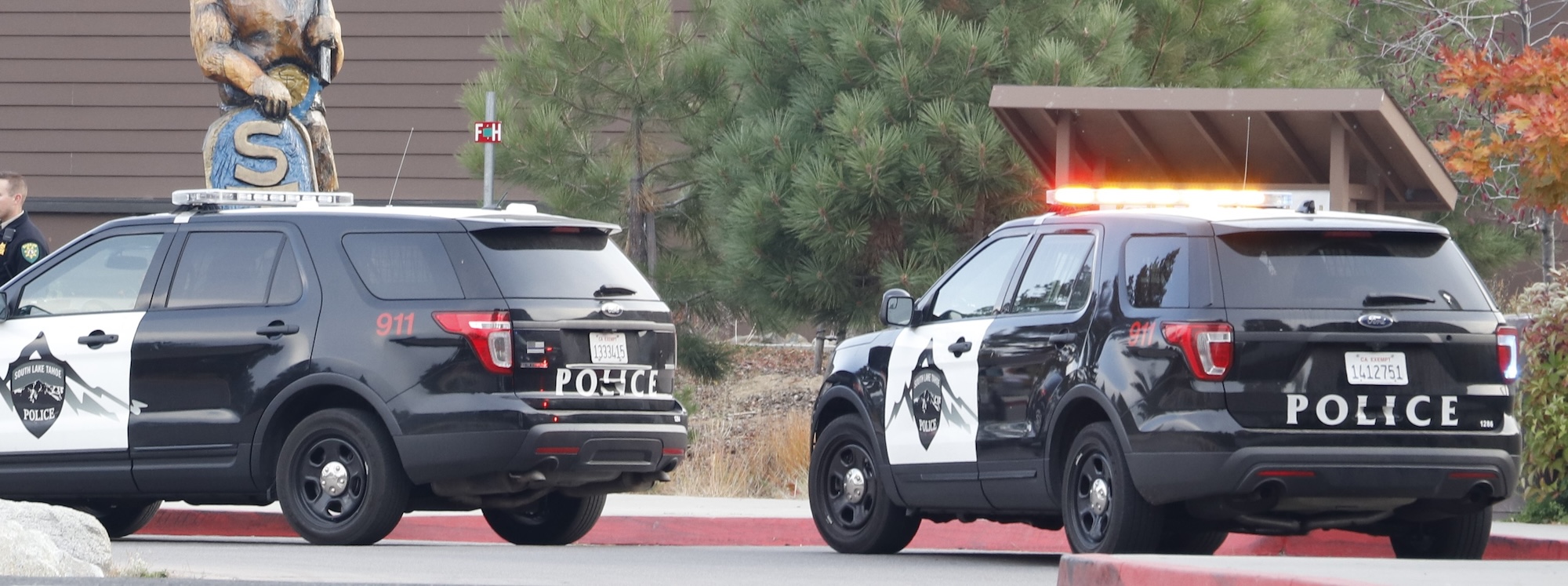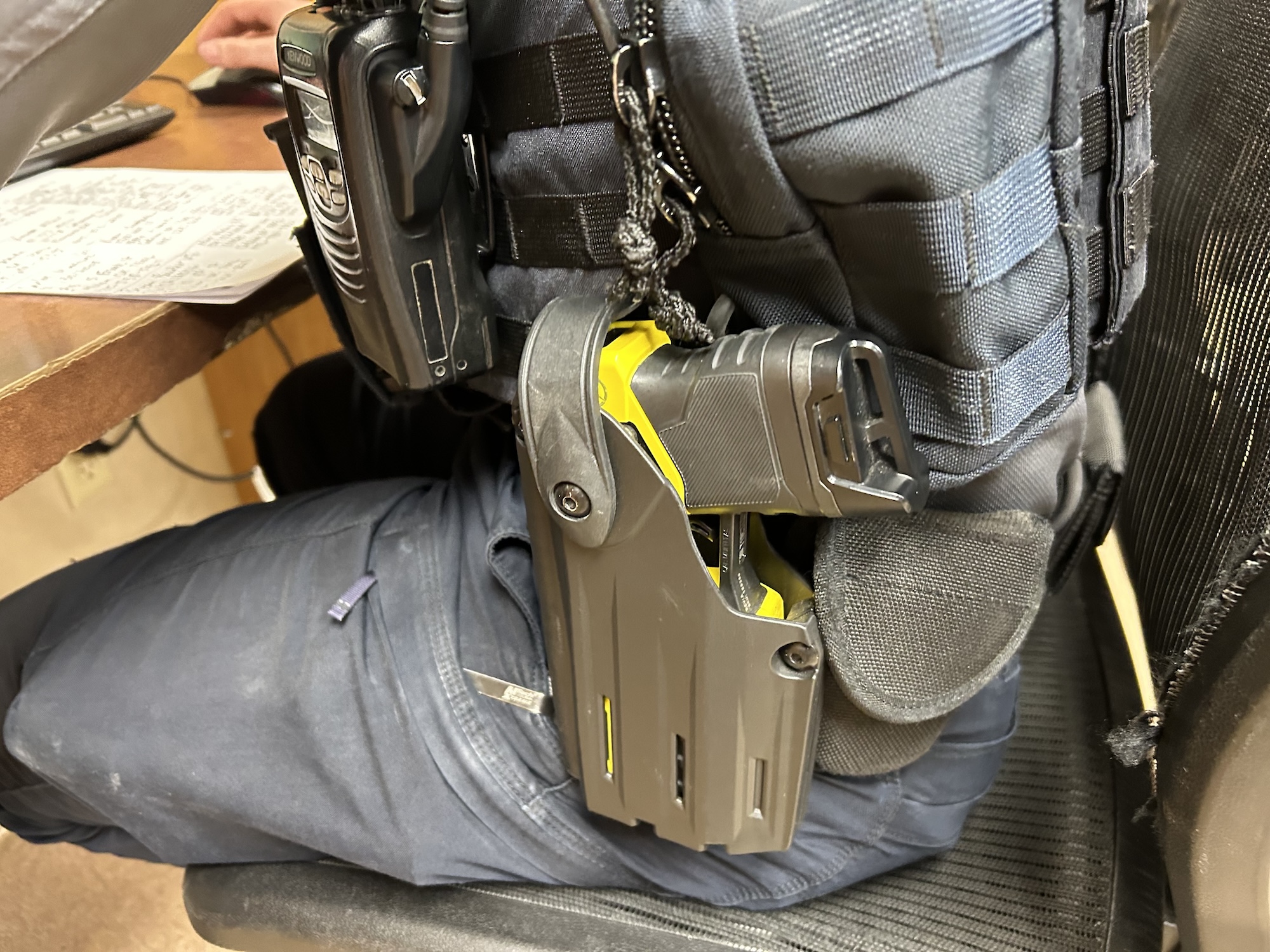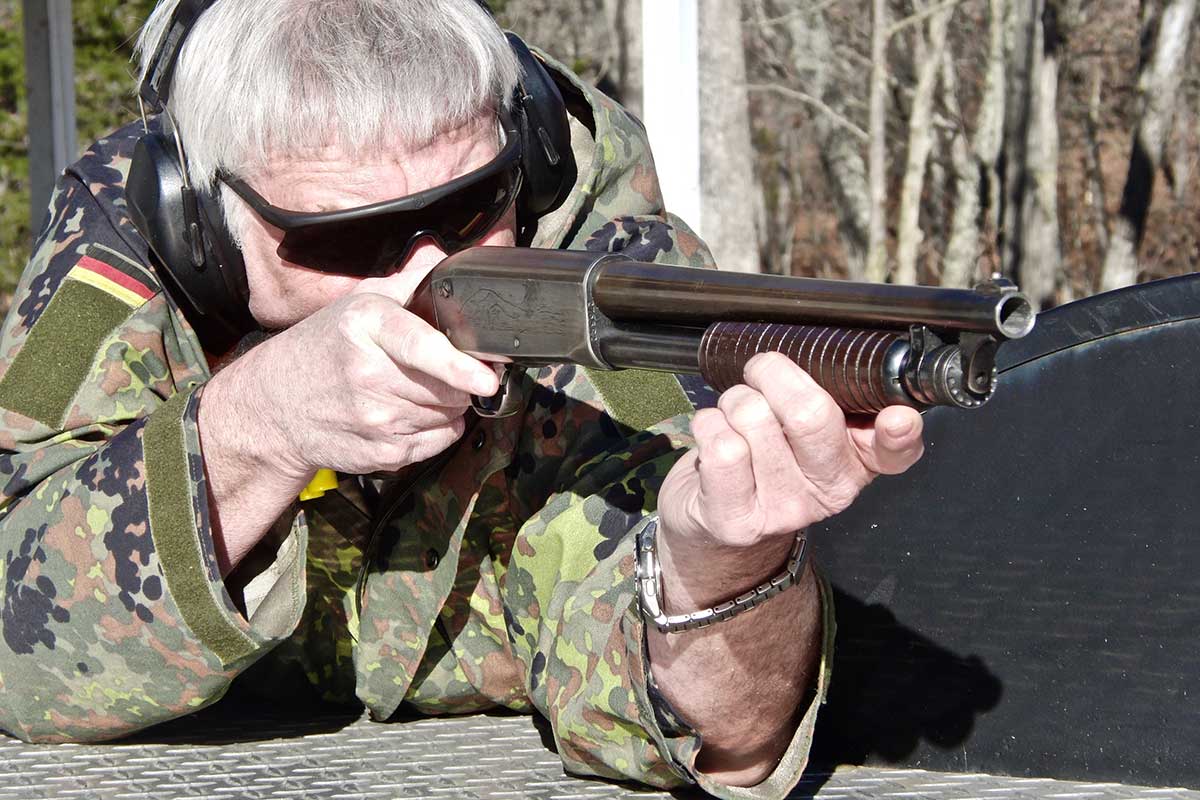
AC-060221-Combat-C-4-800
I’ve written before about the advantages of a 20-gauge combat shotgun, but I decided it was time to revisit the issue in this column.
Up front, I’ll admit that the #3 Buckshot load normally used in the 20-gauge shotgun is not as devastating as the 00 Buckshot load standard in most 12-guage fighting shotguns. However, that is a relative statement. A typical 2 ¾-inch 20-gauge Buckshot load contains 20 #3 buckshot pellets at 1,200 feet-per-second (fps); less than with 12-gauge 00 buckshot, but for home or vehicle defense that’s fairly potent.
And, for those not satisfied with that level of performance, there are 3-inch 20-gauge loads available from Federal and others offering 18 #2 buckshot pellets at 1,100 fps.
Especially for urban or suburban usage, the lesser
range of the 20-gauge loads has always made them somewhat
appealing to city plainclothes officers.
Especially for urban or suburban usage, the lesser range of the 20-gauge loads has always made them somewhat appealing to city plainclothes officers. Remember, too, that a lot of urban departments have loaded their 12-guage shotguns with loads carrying #4 buckshot.
Having established that effective buckshot loads are available for the 20-gauge, I’ll discuss some other advantages of combat shotguns chambered for this load. First, I would note that 20-gage SBS (Short-Barreled Shotguns) with 14-inch or shorter barrels are much easier to control than their big 12-guage brothers.
This applies especially to those with pistol grips or to “firearms” such as the Mossberg Shockwave.
A few years ago, a friend and I conducted an experiment where we fired a round of 2 ¾-inch 12-guage 00 buckshot into each of three targets from a 14-inch SBS at seven yards and then did the same drill with a 20-gauge 14-inch SBS. I honestly don’t remember that exact time differential now, but the three hits definitely came faster with the 20-gauge.
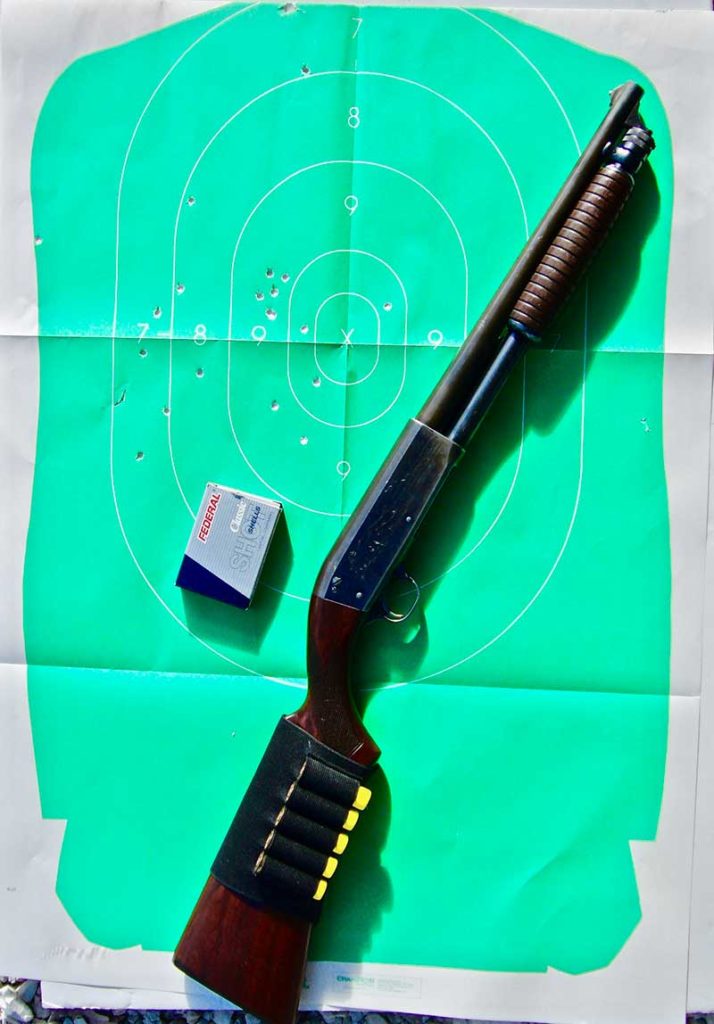
SBS 20-gauge Ithaca 37 fired this 8.5” x 11.5” pattern at 15 yards using Federal Classic 2 ¾-inch #3 Buckshot.
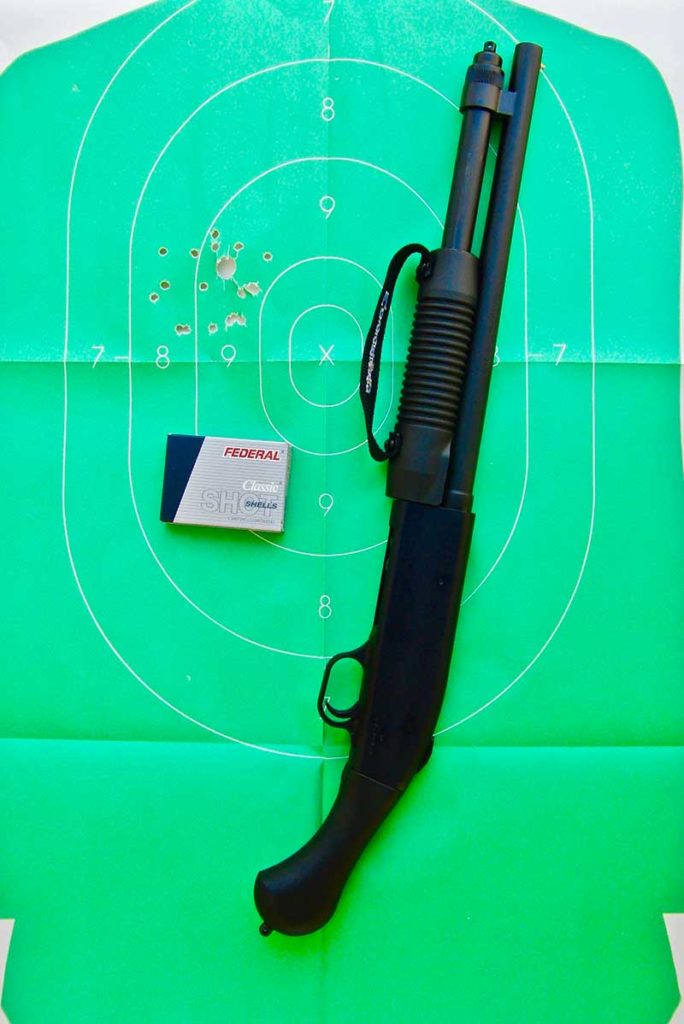
Firing the Shockwave 20-gauge from the hip takes some practice to determine where to hold, but the patterns well with Federal Classic #3 Buckshot at ten yards.
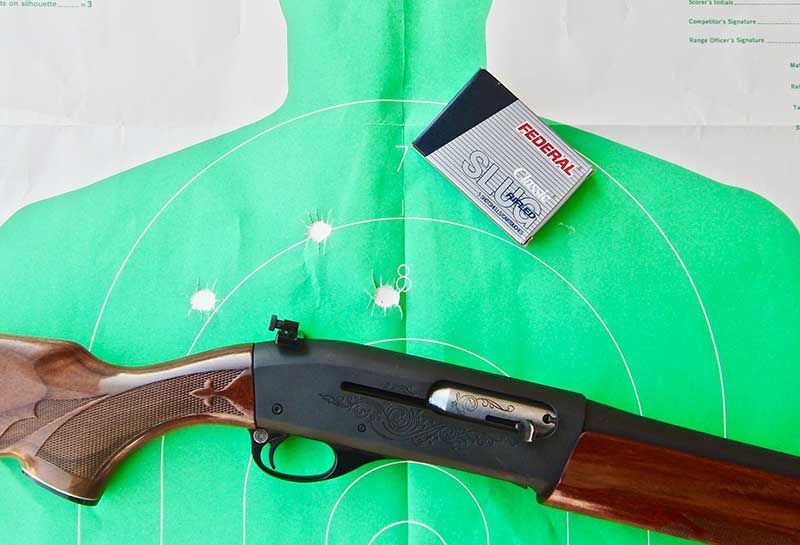
Not only is the custom Remington 20-gauge 1100 Combat Shotgun comfortable to shoot, but it is quite accurate, especially using the peep sight. Shown is a 50-yard 4.5-inch group with Federal 20-guage slugs.
Admittedly, the 20-gauge was a registered Ithaca 37 that was old enough that it still could be “slam fired” by just holding back the trigger and operating the slide. I have fired an older 12-guage Ithaca that retained this feature as well—the 20-gauge was definitely faster. There is less muzzle flip and less recoil with the 20-gauge combat shotgun, allowing faster re-acquisition of the target.
The weight difference between a 20-gauge fighting shotgun and a 12-guage will generally make the smaller gauged weapon quicker to handle.
For example, the 12-guage Mossberg Shockwave weighs 5.25 pounds while the 20-gauge version weights 4.9 pounds.
On the Remington 870 Tactical the difference is more obvious: 7.5 pounds for the 12-gauge 870 Express Tactical with 18.5-inch barrel, while the 870 Express in 20-guage with the same length barrel only weighs six pounds.
These same features that make the 20-gauge combat shotgun faster in a fight, also will normally make it more user friendly for those of smaller stature. I think many readers are aware that one reason there are fewer 12-guage shotguns in patrol cars these days is that a lot of female officers have trouble qualifying with them.
However, that generalization that is not always true. The first female FBI agent I remember in the St. Louis Office cleaned my clock and the clock of many others in a contest with riot guns on moving targets at the Chapman Academy one weekend. She had grown up on a farm and had hunted with a shotgun from not long after she could walk.
Nevertheless, the 20-guage combat shotgun will be easier for many shooters, to the extent that they will feel confident enough to use it, while they would not use a 12-guage. I have also known a couple of experienced shooters who chose a 20-gauge combat shotgun over a 12-gauge one because of injuries that made recoil an issue for them.
I’ve tried various 20-gauge fighting shotguns over the last 25 years or so. Originally, I thought the Russian Saiga 20-gauge offered some real possibilities, as it took a detachable box magazine. I had a custom shotgun smith work mine over and install a choke that allowed very tight patterns. I also got some extended magazines for it.
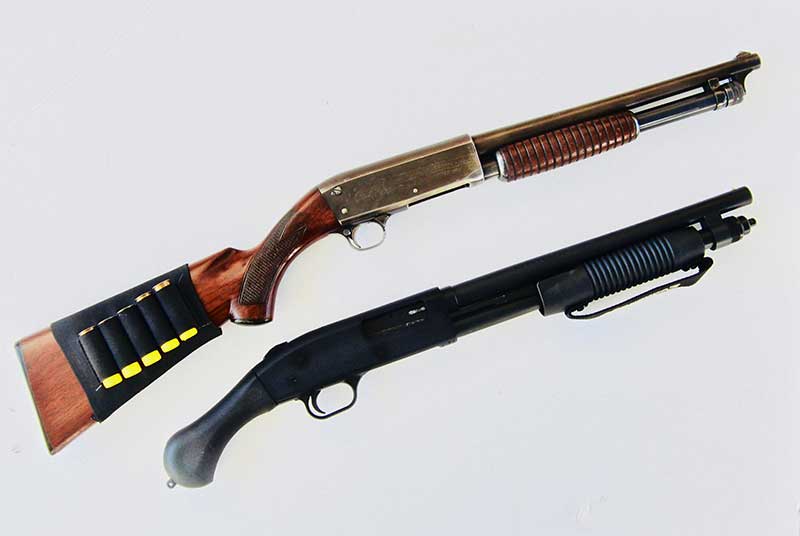
Ithaca 37 is more effective at longer range and for quick follow-up shots, but the more compact Shockwave is extremely handy at close quarters.
The problem was that the magazine was so long that it interfered with using the slide-action.
When my friend got his SBS Ithaca, he sold me a Remington 1100 he had custom built for combat. It is a really sweet little combat shotgun. I have used a Remington 11-87 fighting shotgun as my home defense shotgun for years so the 1100 20-gauge fit me well. It allows very quick follow-up shots due to lighter recoil and the self-loading action and also patterns well.
I also have a 20-gauge Stevens double barrel with 20-inch barrels. It is very handy, but I don’t like to keep it around the house with loaded chambers so haven’t really used it in years.
My friend’s 20-gauge Ithaca 37 is an especially nice close combat weapon. Its 14-inch barrel and lack of a trigger disconnect make it handy and fast. Another plus is that it ejects downwards allowing it to be readily used off of either shoulder to make good use of cover.
A couple of months ago I received an especially useful 20-gauge for combat use. It’s the 20-gauge Mossberg Shockwave which has less recoil the its 12-gauge brother, allowing me to stay on target better for follow-up shots. Since it is a little lighter, it is also a bit livelier in in the hands.
Remington offers some of its 870 combat shotguns, including the TAC-14, in 20-gauge as well, so those who like the 870 can find one to their liking. I’m a huge fan of the Remington 870 and own two Scattergun Technology ones as well as three stock versions.
However, I have to admit that I give the Shockwave a slight edge for use in close quarters. I prefer its top mounted safety and extra round in the magazine.
I still rate the 20-gauge combat shotgun highly, especially in SBS or “Firearm” versions where recoil and muzzle flip would be especially noticeable in a 12-guage weapon.
The availability of the TAC-14 and Shockwave in 20-gauge makes these innovative combat smoothbore fighters even more effective.
ITHACA GUN COMPANY
(419) 294-4113
www.ithacagun.com
O.F. MOSSBERG & SONS, INC.
(203) 230.5300
www.mossberg.com
REMINGTON ARMS COMPANY, INC.
(800) 243-9700
www.remington.com
